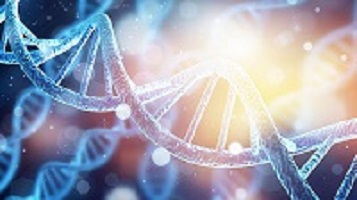Scientists at Osaka Metropolitan University have developed a ground-breaking method for the ultrafast and ultrasensitive quantitative measurement of biological nanoparticles. This innovative technique has the potential to revolutionize early disease diagnosis, allowing for the detection of minuscule particles such as viruses within just five minutes.
Nanoscale extracellular vesicles (EVs), including exosomes, have gained attention as potential biomarkers for a range of diseases and drug delivery vehicles. These EVs, which have diameters of 50-150 nm, play vital roles in intercellular communication. However, the extraction of nanoscale EVs from cell culture media has traditionally been a complex and time-consuming process involving ultracentrifugation.
The research team at Osaka Metropolitan University, led by Director Professor Takuya Iida, Deputy Director Associate Professor Shiho Tokonami, and Assistant Director Professor Ikuhiko Nakase, has discovered a novel approach using laser light to accelerate the reaction between nanoscale EVs derived from cancer cells and antibody-modified microparticles. By analyzing the resulting aggregates using confocal microscopy, the team has successfully measured approximately 103-104 nanoscale EVs within a 500 nL sample, all within a five-minute timeframe.
This breakthrough research provides a foundation for the ultrafast and ultrasensitive measurement of biological nanoparticles, enabling the analysis of cell-to-cell communication and the early diagnosis of various diseases in the future. The ability to detect these minuscule particles quickly and accurately opens up new possibilities for early intervention and personalized treatment strategies.
The potential applications of this new method are substantial, particularly in the field of cancer detection and treatment. Early diagnosis greatly increases the chance of successful treatment, and this ultrafast detection technique could significantly improve patient outcomes. By rapidly quantifying nanoscale EVs derived from cancer cells, healthcare professionals can gain valuable insights into disease progression and tailor treatment plans accordingly.
The benefits of this method extend beyond the realm of cancer research. Alzheimer’s disease, another complex and challenging condition, could also benefit from the ability to detect and measure nanoscale EVs quickly and accurately. By identifying these biomarkers early on, it may be possible to intervene before the disease reaches an advanced stage, improving patient prognosis and quality of life.
Furthermore, the potential for drug delivery applications is promising. Nanoscale EVs can serve as carriers for targeted drug delivery, efficiently delivering therapeutic agents to specific cells or tissues. The rapid and sensitive detection of these EVs allows for precise monitoring of drug distribution and uptake, enabling healthcare professionals to optimize treatment regimens and maximize therapeutic efficacy.
In conclusion, the Osaka Metropolitan University research team has achieved a significant breakthrough in the detection of biological nanoparticles. By harnessing the power of laser light, they have developed an ultrafast and ultrasensitive method for measuring nanoscale EVs derived from cancer cells. This groundbreaking technique has immense potential for early disease diagnosis and personalized treatment strategies, paving the way for improved patient outcomes and a more targeted approach to healthcare.
Note:
1. Source: Coherent Market Insights, Public sources, Desk research
2. We have leveraged AI tools to mine information and compile it



